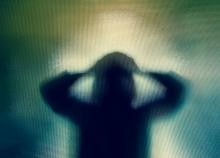My medical office in Cincinnati isn’t in the best part of town. It’s next to a busy bus stop, a block from the medical center, behind a McDonald’s, and next to a convenience store. Ohio is the epicenter for the opioid crisis, and there are three drug treatment centers within a mile of my office. Hungry “ghosts” drift through my office parking lot. (See “In the Realm of Hungry Ghosts – Introduction,” Gabor Maté, MD).
I tell you these things because it helps me to rationalize how I missed something one day that should have been obvious to me at the time. I’ve been grappling for some time with my belated realization of what I may have seen that day, and what I wished I had done in response.
I mentioned that my office is next to a convenience store, and I’ve been a regular customer there over the years. One day when I was in there, paying for something, a swaggering guy in his 50s – reddish comb-over, glasses, muscular – came in with a young blond girl. I guessed her to be his 14- or 15-year-old daughter. I paid for my purchase, and glanced over to see them standing at the ice cream counter. That’s nice, I thought, he is buying his daughter an ice cream cone. I used to buy my kids ice cream here. But then I noticed that the girl was trembling, quaking really, and crying softly. I stopped, and noticed that the man had his arm around her. His grip was way too tight and his arm was draped too low. I stepped back, and I swear I saw blood running down from her scalp and behind her ear.
Good grief, this isn’t right! I was paralyzed. Maybe she wasn’t his daughter. Maybe she was some sort of a captive, a victim? Maybe he had just beaten her and was now rewarding her? I knew something was wrong, and I did not know what to do. The store was busy, and I looked around at the other people there but no one else seemed to notice her unhappiness or the blood.
I did not say ‘unhand that girl.’ I did not say ‘I am a doctor, can I help you?’ I did not even ask her if she was OK. Instead, I walked back next door to my office and started making phone calls. I called the police and got a recording. Eventually I spoke to someone, but I had no proof. I was angry with myself for not taking a picture – my phone was in my pocket. Did I observe a crime being committed? Were there other witnesses? The sorry truth is that I had walked away, the man and girl were gone, and any others who may have seen what I saw also had left. This could have been a case of human trafficking, I said, and recommended that they follow up with the store and any evidence that they could pick up from its video cameras. It’s been nearly a year, and I have heard nothing.
My failure to act at the time has tormented me for months. I have sought out more information about human trafficking, and the event I witnessed is what human trafficking looks like.
Maybe that girl was his daughter. Maybe she fell and cut her head. Maybe I was jumping to conclusions. But I am never again going to walk away from a girl who is clearly injured and potentially in trouble. I am going ask that girl if she’s OK, I am going to take a picture, and I am going to dial 911 immediately.
Don’t be a failure like me. Call 911. Take a picture. Take the risk, embarrass yourself or you will be tormented by your conscience as I am. , and stop allowing our young people to be fed to monsters.
The Centers for Disease Control and Prevention offers information and resources on human trafficking at www.cdc.gov/violenceprevention/sexualviolence/trafficking.html.
Dr. Coldiron is in private practice but maintains a clinical assistant professorship at the University of Cincinnati. He cares for patients, teaches medical students and residents, and has several active clinical research projects. Dr. Coldiron is the author of more than 80 scientific letters, papers, and several book chapters, and he speaks frequently on a variety of topics. He is a past president of the American Academy of Dermatology. Write to him at dermnews@mdedge.com.



